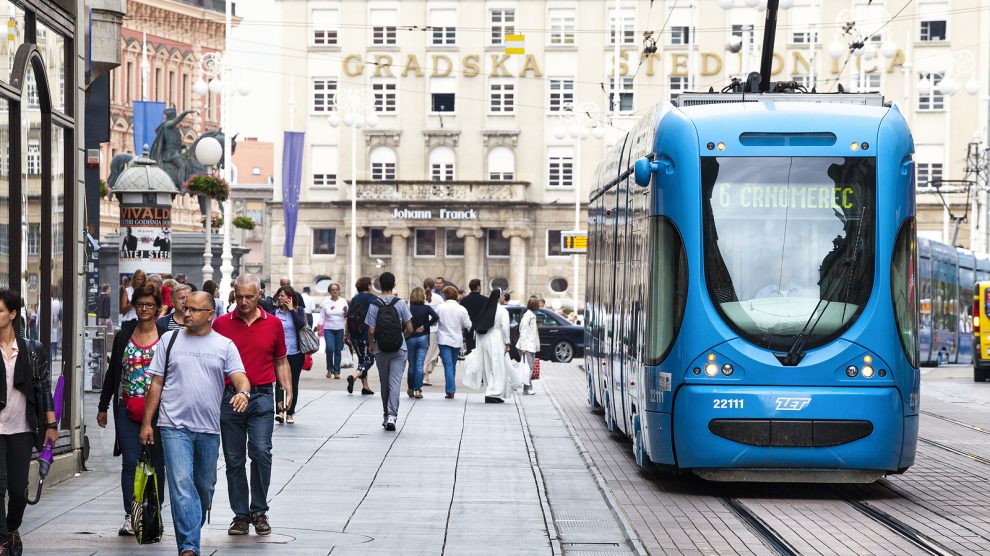Croatia’s economy was remarkably resilient in 2022 as tourism rebounded after the Covid-19 pandemic. While membership of the eurozone and Schengen Area will further boost tourism this year, growth is expected to slow while labour shortages continue.
Situated on an impossibly serene stretch of Adriatic coastline, Croatia is known around the globe as a tourism destination second to none. And while tourism accounted for 22.2 per cent of Croatia’s gross domestic product (GDP) in 2022, there is more to its economy.
- There’s more to Croatia than July and August
- Croatia’s Rimac moves beyond EVs
- Postcard from Dubrovnik: Crowded but worth the hassle
In the latest edition of the Emerging Europe IT Competitiveness Index, Croatia ranked thirteenth out of the 23 countries in the emerging Europe region. However, it has 44 information and communications technologies (ICT) graduates per 100,000 people—the seventh highest in the region—and has the fourth highest value added per ICT employee per month in the region. Infobip, a global leader in omnichannel engagement, reached unicorn status in 2020.
The country is also home to Rimac, best known for its electric supercars which are among the fastest production automobiles in the world. In May the firm announced its entry into the stationary energy storage systems (ESS) market with a new brand, Rimac Energy.
Croatia has a ‘BBB+’ long-term issuer default rating from Fitch.
First year in the eurozone and Schengen Area
A bumper post-pandemic tourist season last year significantly contributed to Croatia’s robust 6.3 per cent growth in 2022—fourth quarter 2022 revenue from tourism was 24 per cent higher than the record-breaking pre-Covid-19 levels of 2019.
Since the country joined the eurozone and border-free Schengen Area in January of this year, it is on track to record even more visitors.
The Vienna Institute of International Economic Studies’ (wiiw) research associate and author of its April forecast for Croatia, Bernd Christoph Ströhm, tells Emerging Europe, “The tourism sector started the year strongly, recording 5.3 million overnight stays in the first quarter of 2023 – up 19.6 per cent year on year.”
Joining the eurozone will also increase investor confidence, resilience to external shocks, and the ease of acquiring loans with lower interest rates while boosting other sectors of the economy.
“Croatia’s new currency regime will facilitate significant investments, especially in the rapidly growing information technology sector and in other areas, such as the country’s metal processing industry and the energy sector,” adds Ströhm.
Ströhm believes Croatia is positioned to become an energy powerhouse for not only the Balkans but the entire European Union. Last year, Zagreb invested 155 million euros in developing the Zlobin-Bosiljevo gas pipeline and 25 million euros in increasing the capacity of Krk’s liquefied natural gas (LNG) terminal.
“To facilitate Croatia’s expanding role as an energy exporter and to contribute to Croatia’s energy self-sufficiency and energy security in the region, the government decided that Croatia should increase its exploration and production of hydrocarbons between 2022 and 2024 by about 30 per cent,” said Ströhm. The INA Group, a state-owned oil and gas company, aims to increase natural gas output by 55 million cubic metres per year by drilling in Adriatic gas fields.

Challenges ahead
Despite doubling down on natural gas while neglecting its underutilised solar capacity, Croatia wants to achieve carbon neutrality by as soon as 2030. To aid the implementation of its climate change adaptation measures by 2026, Zagreb will receive 6.3 billion euros under the EU’s Recovery and Resilience Facility, but major progress will still need to be made to meet its carbon neutrality goal.
Croatia’s investments in gas supplies come as soaring energy prices significantly contributed to raising its inflation rate above the EU average of 8.4 per cent to a record 10.7 per cent in 2022.
While wiiw forecasts inflation will lower to 6.5 per cent in 2023, limited household purchasing power and private investment will prevent growth from exceeding 2.5 per cent. Productivity lags behind regional and EU peers due to low levels of research and development (R&D) investment and innovation and technology adoption and is compounded by weak managerial and organisational practices and constraints on competition.
The country is also suffering from severe labour shortages exacerbated by emigration to other European countries since its EU accession in 2013. On average, two per cent of Croatia’s population emigrated each year from 2014 until 2017.
“The government is attempting to address labour shortages in tourism, construction, transportation, the metal and food industries by hiring foreign workers,” says Ströhm. “To limit labour shortages, the government already abolished Croatia’s annual quota for the employment of foreign nationals in 2021.”
As tourism rebounds after Covid-19, demand for workers is high and unemployment is on track to decrease to pre-pandemic levels soon.
Unlike many news and information platforms, Emerging Europe is free to read, and always will be. There is no paywall here. We are independent, not affiliated with nor representing any political party or business organisation. We want the very best for emerging Europe, nothing more, nothing less. Your support will help us continue to spread the word about this amazing region.
You can contribute here. Thank you.







Add Comment